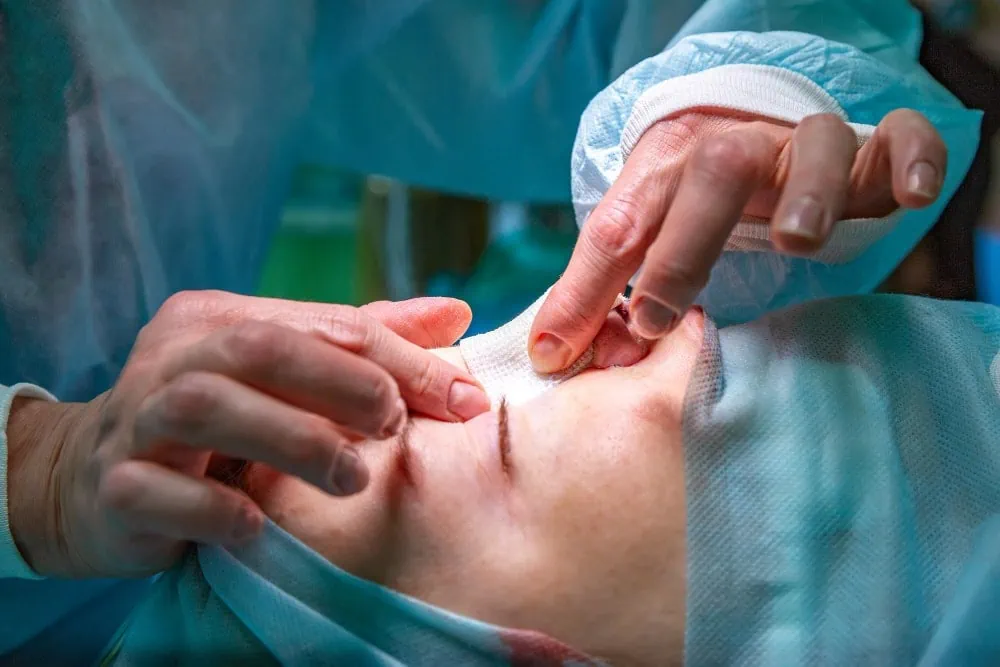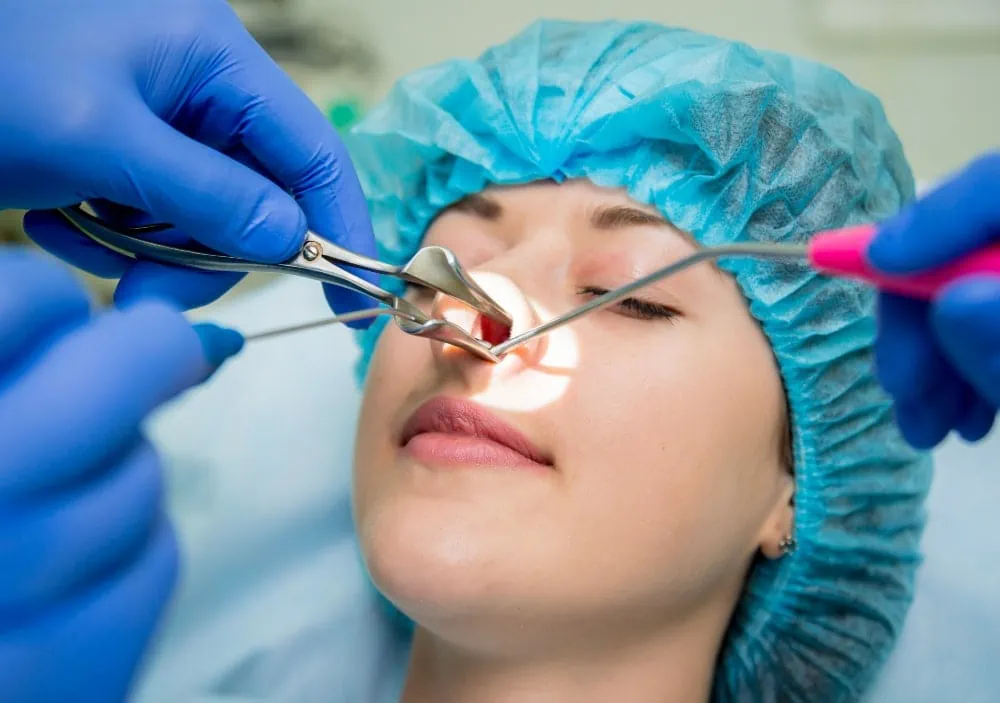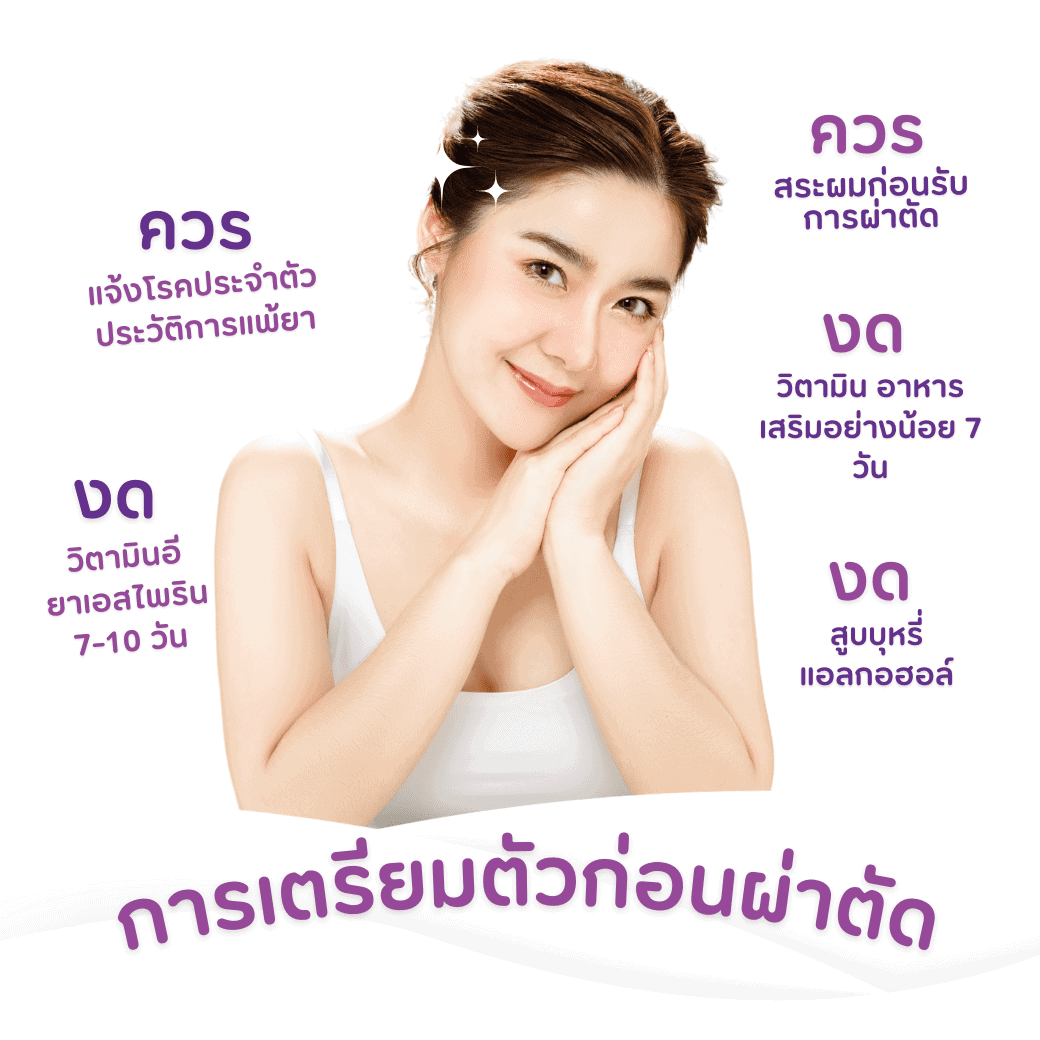Rhinoplasty
How many types of rhinoplasty are there?
Alarplasty
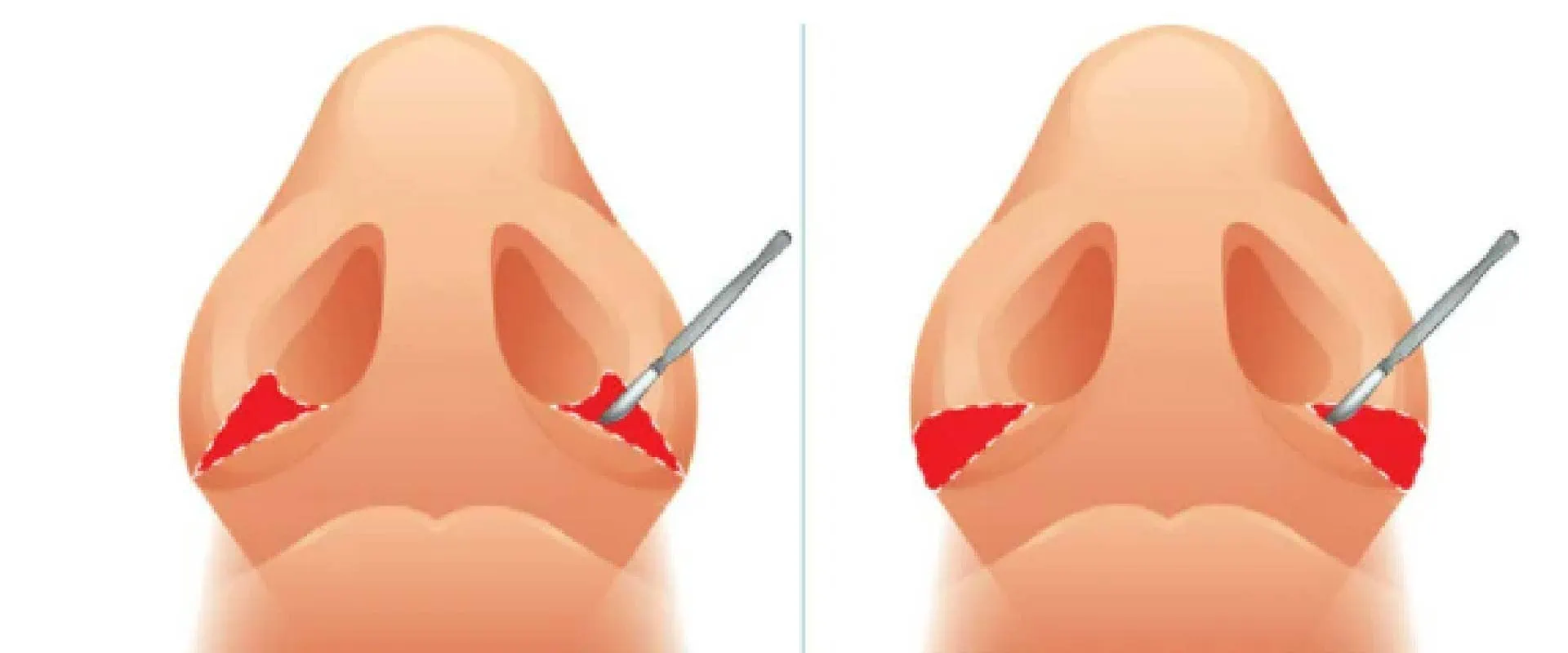
Should the alarplasty be cut from the inside or outside?
type of silicone
Location of the wound
- hidden wound in the nostrils Most of the wounds are not visible from the outside. The surgeon will use dissolvable sutures. which will fall off by itself in 3 weeks
- Incision outside the nose For the case of correcting the tip of the nose by using the ear bone to correct the nose Can do both the wound outside and in the nostrils
Close Technique
Closed rhinoplasty (Close Technique) We will use an open incision within the nose. and inserting silicone, which is a closed nose augmentation method Will open a very small incision, only 3 mm. Don't worry about scars.
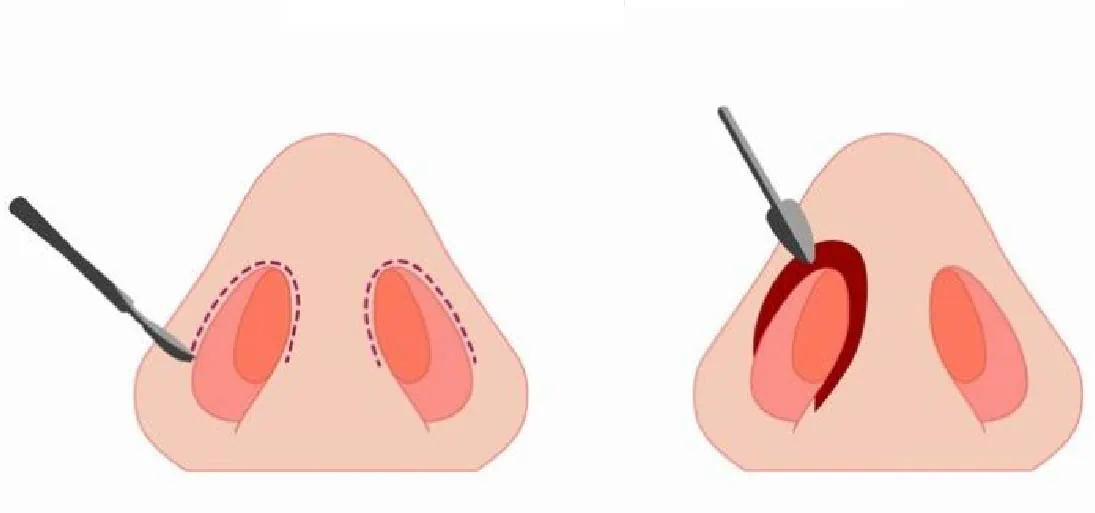
Who is Close Rhinoplasty suitable for?
I must say that the closed rhinoplasty method Suitable for people who don't have much nose structure problems. which structural problems such as crooked nasal bone This problem cannot be solved with closed rhinoplasty.
Advantages of Close Rhinoplasty
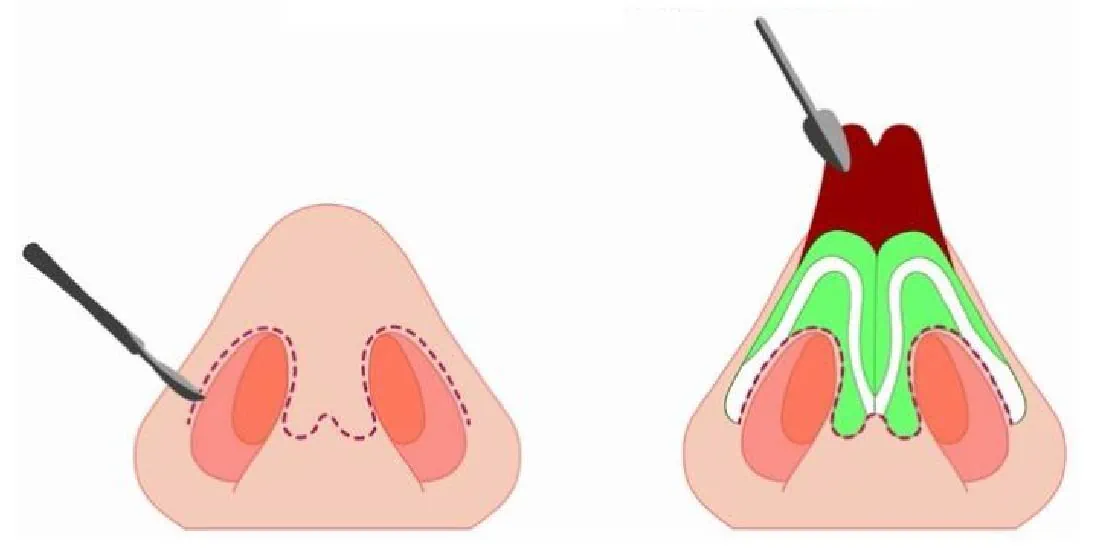
Open surgery
familiar with the name “Open rhinoplasty” which is augmentation of the nose by adjusting the internal structure To solve the problem exactly in the part that the Close rhinoplasty cannot do, such as nailing the base of the nose Elongation of the nasal septum in people with short noses or crooked nose, etc.
Open rhinoplasty is suitable for whom?
Open rhinoplasty is suitable for those who want to directly solve the nasal structure problem. which is a nose augmentation by adjusting the internal structure that close rhinoplasty cannot be done, such as nailing the base of the nose Elongation of the nasal septum in people with short noses or crooked nose, etc.
Advantages of open rhinoplasty
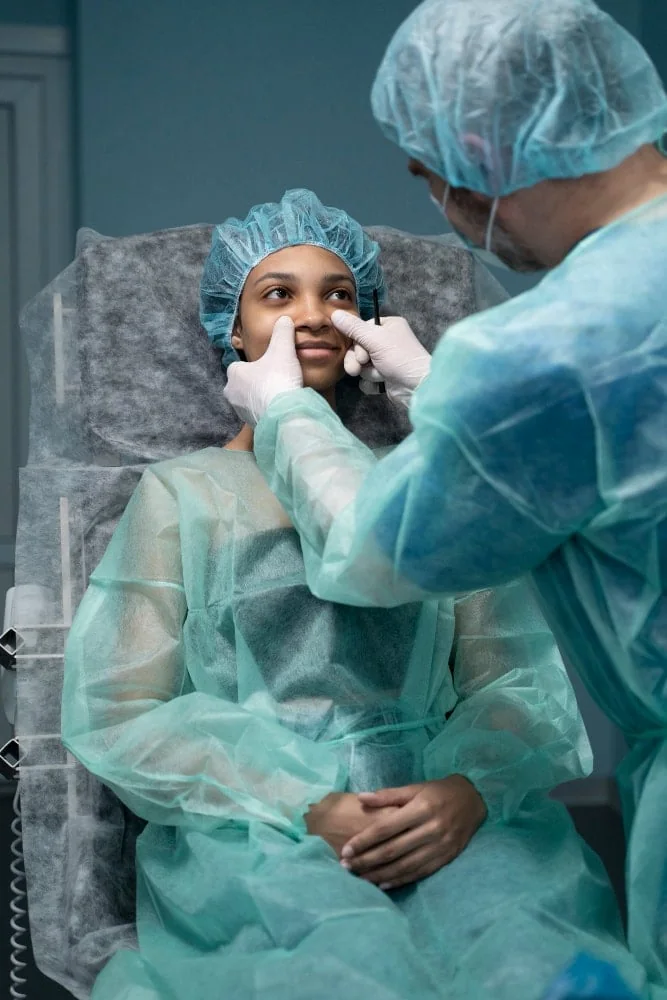
Imaging in surgical planning The patient's nose will need to be photographed from different angles. If the surgery is done, how will it work? The surgeon will use the photos to compare both before and after surgery. as well as for reference during surgery and in the long term
Expectations of those undergoing surgery The doctor and the patient need to discuss the need for expectation from plastic surgery The doctor will recommend which type of nose surgery can or cannot be done. and the result will be The patient must have the confidence to talk about their appearance. and should be open to the surgeon's needs Sometimes, the doctor may recommend additional surgeries on other parts of the face to make the face look more balanced.
Also, avoid taking painkillers such as aspirin or ibuprofen for at least 2 weeks prior to surgery, as these drugs can cause more bleeding than they should during surgery.
If medication is needed, it should only be recommended by the surgeon who performed the operation. and should abstain or quit smoking Because the toxins in cigarettes slow down the healing process of surgery. and may make the patient more prone to infection
Preparation before rhinoplasty surgery
Rhinoplasty surgery procedure
If it's a little extra The surgeon may take cartilage from the inside of the nose. Or take the cartilage from the ear as a supplementary material. But if wanting to add more A bone graft cartilage may be required from the rib area. Or cartilage from other parts of the body or in some cases may use synthetic materials used for surgery such as silicone etc.
Topical in conjunction with a sedative or anesthetic. The choice of such drugs will depend on the complexity of the surgery. and skill of the surgeon Therefore, it is best to consult with your doctor in advance the type of anesthetic used. In order for the doctor to determine which type of anesthesia is most suitable for the patient undergoing surgery
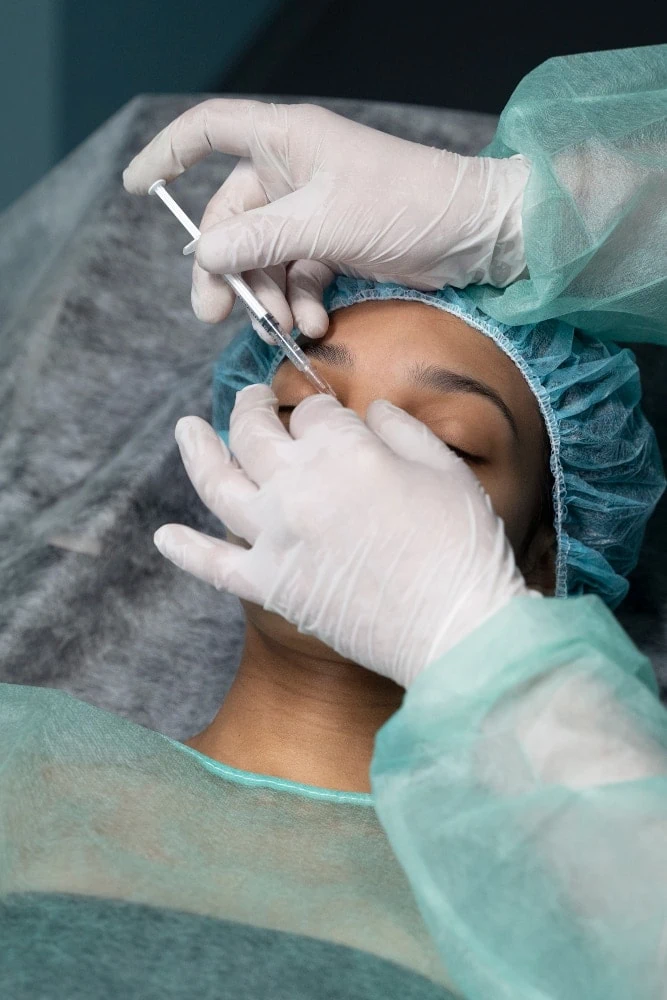
Local anesthetics in combination with sedatives This type of anesthetic is often used in outpatient surgery. Limited surgical space The doctor will inject painkillers and painkillers and anesthetics into the nasal tissue. and giving a sedative through a vein This will put the patient in a half asleep state.
Anesthesia Anesthesia is given either through inhalation or through a small saline line attached to the palm. The anesthesia affects the body and causes unconsciousness. This method also requires intubation during surgery.
However, after surgery The patient will be taken to the recovery room. In which the staff will keep an eye on the functioning of various systems in the body and wait for the patient to feel conscious. The surgery recipient may be able to go home the same day. or if there are other health problems, it is necessary to stay overnight to wait and see other symptoms
Caring for yourself after rhinoplasty
- Cold compress 4-5 days after surgery. to stop the bleeding If the cold compress is not applied, it will cause bleeding and fibrosis. Resulting in distorted nose
- Take care of wounds in the nasal cavity with a cotton swab and wipe with saline solution. Do not use alcohol, betadine, or strong antiseptics.
- Avoid going to dusty places for about 1 week, prevent coughing or sneezing
- See a doctor for an appointment to remove the threads
- can lie on its side does not cause the silicone to move Because usually the doctor will tape it to prevent movement. But avoid sleeping on your stomach
- Avoid food that you are allergic to. and foods that cause swelling, redness, such as hot foods Spicy foods, salty foods, alcohol, tobacco, etc.
Precautions for rhinoplasty surgery
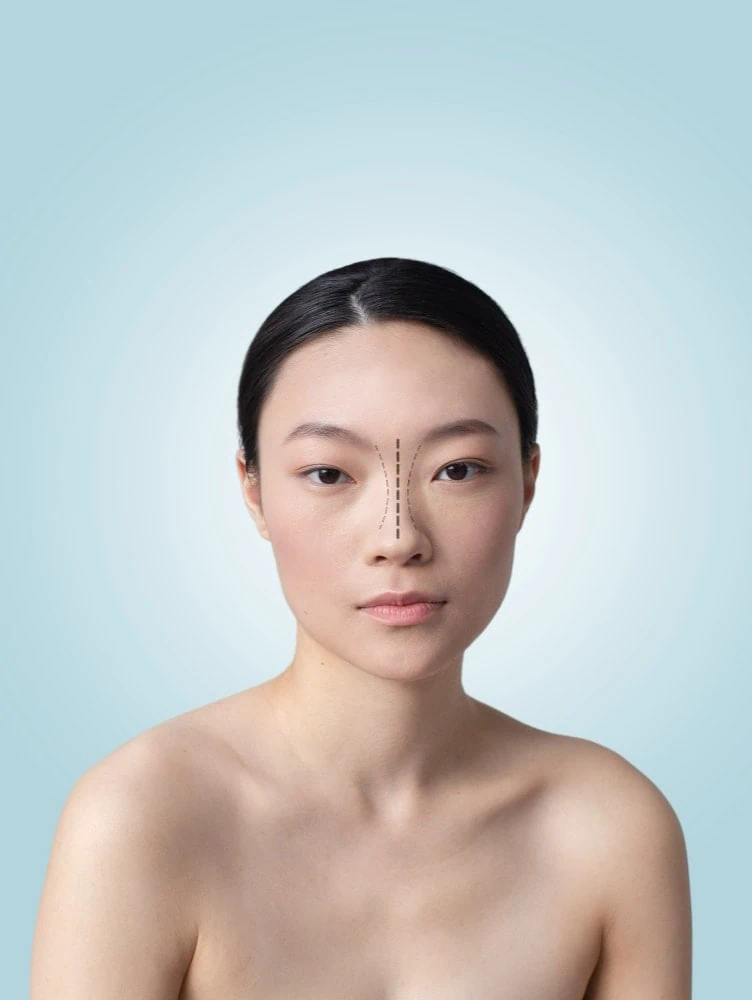
Characteristics of a crooked nose
- skewed cone
- Bevel tip
- All inclined bars
Complications after rhinoplasty
Silicone perforation is caused by the reinforcement of the silicone rod that is too large or the silicone is not stable in the cavity. causing it to move back and forth and cause penetration The method of treatment is a new surgery by allowing the patient to rest for 2-3 months, which the doctor will treat since the silicone is almost penetrated. That is, when water blisters begin to occur. or the walls become thin and clear until the silicone rods are visible
Symptoms (that may occur) after rhinoplasty day by day
During the first 1-3 days : There may be swelling at the wound, feeling of tightness and bruising around the nose or under the eyes. It is advisable to continue taking the medication prescribed by your doctor. Or eating Centella asiatica herbs will help to recover from swelling and bruising faster.
7 days after rhinoplasty: After a week, the swelling will begin to subside. Depending on the care and diet.
14 days after rhinoplasty : Normally, after 14 days, the swelling will subside significantly. Including various bruises will disappear. It is important to see a doctor to cut the stitches.
After 1 month of rhinoplasty: symptoms of swelling will be greatly reduced and the shape of the nose will be clearly visible. But some people may have some bruising and yellowness. but can put on makeup as normal
After 3-6 months of augmentation, the nose shape will begin to be seen more clearly. The nose will begin to tighten the beautiful axis into place.


